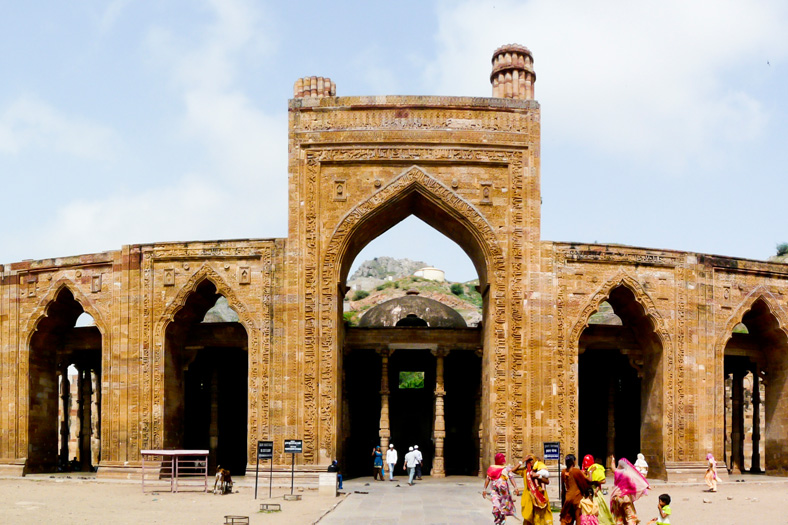Indian architecture is in a state of flux

Indian architecture is the result of socio-economic and geographical conditions. It has always been based on some scientific techniques and methodologies.
From caves, temples and mosques to palaces and stupas, India boasts an architectural diversity like no other country in the world. This incredibly rich heritage has developed over nearly 4,000 years, during which time India absorbed many different political, religious and artistic influences. Being one of the most enduring achievements of Indian civilization, Indian architecture is the result of socio-economic and geographical conditions. Indian architecture has persevered as a response to its culture and climate creating spaces intangibly connected to form a building complex. The amalgamation of segregated spaces is a typical feature observed in different languages of Indian architecture.
Indian architects have always prevailed a very good connect with the directions, wind pressure, sun path and other basic elements while designing buildings. It was present in our ancient architecture as well as in contemporary times. The architecture of Charles Correa and AP Kanvinde considers all these elements and cosmic energies.
Traditional Architecture
Indian architecture has always been based on some scientific techniques and methodologies. Sun temple and shore temple may form as relevant exemplars to justify the same. Incorporating numerous scientific techniques, our traditional ancient architecture has always been a perfect portrayal of a glistening example of religious buildings rather than any other institutional or other landmark buildings. The masterminds behind these spectacles are the global pioneers of the architectural domain and have paved a formidable path to follow and ponder upon.
Nalanda inscription
For instance, although we have only read about Nalanda university or Nalanda Mahavihara, the first university of Bharatvarsh (known as India/ Bharat today), it was regarded as an architectural masterpiece.In ancient days, this monastic and scholastic institution was located in the kingdom of Magadha, which is now the modern state of Bihar. Enveloped by a lofty wall and a huge gate, the institution comprised of several temples, viharas (educational and residential buildings), compounds, stupas, classrooms and meditation halls. Parks and lakes also adorned the institution’s grounds. The excavated ruins of the institution indicate that bright red bricks were used in its construction. One of the highlights of Nalanda was its well-equipped and colossal library housed in three large multi-storied buildings called the Ratnasagara (Ocean of Jewels), the Ratnaranjaka (Jewel-adorned), and the Ratnodadhi (Sea of Jewels). Ratnodadhi was where the most sacred manuscripts of the institution were kept, and this building was nine stories high. Some other architectural instances with scientific innovation include religious buildings in the eastern and southern part of India like Meenakshi temple which exemplifies iconic elegance.
Nawalgarh- Abode of Tigers
Nawalgarh Fort in the Shekhawati region of Rajasthan is one landmark project. It is situated in a region famous for art and architecture particularly exquisitely painted haveli. This sprawling fort is home to numerous Havelis that are famous worldwide for their stunning architecture of the highest variety. The architecture of Nawalgarh Fort is renowned for some of the finest frescoes in the region. A cluster of Havelis to the west of the fort is known as Aath Havelis. Further, visitors can see the European influence on the frescoes and murals displayed here. The majority of paintings here may not be in the prime state, but they still give a peek into the transition in the traditional painting of the region. The Nawalgarh Fort may look largely disfigured today due to the time span of centuries they continue to evoke the romance of the glorious medieval era. At present, the fort is a site to bank branches and other modern attractions.
Islamic architecture – Trajectory of time
With traversing trajectory of time, we started losing our identity back in the 15th century when the Mughal arena established. The overall architecture then was turned towards Islamic architecture and we lost the scientific connect that was initially the ethos of Indian architecture. Further with globalisation, the design language constantly traversed and eventually turned contemporary. While geographical conditions direct the design identity in India, globalization has also been a prevalent baseline that extracts the essence of an identity and causes epidemic which inhibits architecture to respond to its culture and creates an appropriate semblance.
India International Centre – Reflecting inherent “Indianness” in the present timeline
The ‘India International Centre’ at New Delhi by Architect Joseph Allen Stein is another masterpiece which reflects the inherent “Indianness” in the present timeline. The IIC is a unique non-official organisation that serves purely as a meeting place for a myriad cultural and intellectual gathering the city has to offer. While the building is very low key and understated in its elegance, it was ahead of its time and remains relevant even today. Built at a time where air-conditioning was rare, the building uses age-old time-tested principles of shading devises; ‘Jaali’ screens and cross ventilation to keep the interiors pleasant. Climate and building technology-related issues, that we attempt to deal with today, were elegantly addressed decades ago. The building plan is oriented to respect the Lodhi Domes in the vicinity and borrow the lush landscape visually for itself.
The Path Ahead
The future directs us in doing an intricate study of all the statistical data and other parameters which has been in practice since earlier times before modern architecture came into being. In today’s world, it is a responsibility of future architects to examine all the aspects while designing a building. To conclude, Indian architecture is in a state of flux where we have everything—explorations, opportunities, experiments and evolved sensibilities—and a step in the right direction could yield great results and maybe help in re-discovering what we have lost. The need of the hour is to not be carried away with what is happening around us, but to understand our needs, our expectations, our roots and work towards an architecture that adapts to changing lifestyles but stays true to its values and identity; that communicates to people and shapes our society; that helps in building memories and gives us buildings and spaces that can sustain till posterity.
For more details, contact:
Kapil Mehta,Principal Architect,Kapil Mehta & Associates
18
Cookie Consent
We use cookies to personalize your experience. By continuing to visit this website you agree to our Terms & Conditions, Privacy Policy and Cookie Policy.









